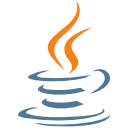Top V (programming language) Alternatives for Your Next Project
V (programming language) is a statically typed, compiled language celebrated for its focus on building maintainable software, drawing inspiration from Go, Oberon, Rust, and Swift. While V offers a compelling blend of features for various development needs, developers often seek alternatives due to specific project requirements, team familiarity, or a desire for different paradigms. This article explores some of the best V (programming language) alternatives available today, helping you find the perfect fit for your next venture.
Discovering Excellent V (programming language) Alternatives
Whether you're looking for broader community support, more established ecosystems, or specific performance characteristics, there's a wealth of programming languages that can serve as strong alternatives to V. Let's dive into some of the most prominent options.

Python
Python is an interpreted, object-oriented, and extensible programming language known for its clarity and versatility. As a free and open-source language available across numerous platforms including Mac, Windows, Linux, and BSD, Python offers dynamic typing, garbage collection, and a modular system, making it an excellent V (programming language) alternative for rapid development, scripting, and data-intensive applications where V's compilation might be overkill.

Java
Java is a general-purpose, class-based, object-oriented programming language designed for maximum cross-platform compatibility. Being free and open-source, Java runs on virtually any device, from desktops to mobile (Android) and web. Its robust object-oriented features, garbage collection, and X86/x64 compatibility make it a powerful V (programming language) alternative, especially for large-scale enterprise applications and Android development, where its mature ecosystem and stability are highly valued.

C (programming language)
C is a foundational general-purpose programming language renowned for its efficiency and close-to-hardware capabilities. Free and open-source, C is available on almost all platforms. It's a compiled language that supports manual memory management and systems programming, making it an ideal V (programming language) alternative for scenarios requiring high performance, direct hardware interaction, or operating system development, areas where V might aim but C has a long-standing proven track record.

C++
C++ is a powerful, multi-paradigm, compiled programming language that extends C with object-oriented features. Free and open-source, it runs on Mac, Windows, Linux, and BSD. Its strengths lie in systems programming, high-performance computing, and game development. C++ serves as a robust V (programming language) alternative for applications demanding exceptional speed and intricate control over system resources, benefiting from its vast libraries and mature development tools.

Ruby
Ruby is a dynamic, reflective, object-oriented programming language known for its focus on programmer productivity and elegant syntax. As a free and open-source language available on Mac, Windows, Linux, and BSD, Ruby features dynamic typing, a powerful package manager, and is highly suitable for web development (via Ruby on Rails) and scripting. It's a strong V (programming language) alternative for those prioritizing developer experience and rapid application development, especially in web-centric projects.

C#
C# (C-sharp) is a multi-paradigm programming language developed by Microsoft, encompassing strong typing, object-oriented, and functional programming. It's free and open-source, primarily used on Windows, but also supported on Mac and Linux through .NET. C# is a compiled, object-oriented language making it a compelling V (programming language) alternative for Windows application development, game development (Unity), and enterprise solutions, leveraging its extensive framework and tooling.

Go (Programming Language)
Go, also known as Golang, is an open-source programming language designed by Google for building simple, reliable, and efficient software. Available on Mac, Windows, Linux, and BSD, Go is a compiled language with built-in concurrency features and a strong emphasis on readability and performance. Given V's inspiration from Go, it's a natural and powerful V (programming language) alternative, particularly for network services, cloud-native applications, and microservices.

Rust
Rust is a systems programming language that prioritizes safety, speed, and concurrency. Free and open-source, it runs on Mac, Windows, Linux, and BSD. Rust is known for preventing almost all crashes and eliminating data races, thanks to its unique ownership system and static typing. For developers seeking a V (programming language) alternative for high-performance, critical systems where reliability and memory safety are paramount, Rust stands out as an exceptional choice.

Lua
Lua is a powerful, fast, lightweight, and embeddable scripting language. Free and open-source, it's available across numerous platforms, including Mac, Windows, Linux, and various mobile OS. Lua combines simple procedural syntax with powerful data description constructs, making it an excellent V (programming language) alternative for embedded systems, game development scripting, and extending applications where a full-fledged language might be too heavy.

Perl
Perl is a high-level, general-purpose, interpreted, and dynamic programming language with a long history of development. Free and open-source, it runs on Mac, Windows, Linux, and BSD. Perl excels in text processing, system administration, and web development. While V focuses on compiled software, Perl offers a flexible and powerful V (programming language) alternative for scripting tasks, data manipulation, and situations where rapid prototyping and extensive string handling are critical.
Choosing the right programming language is a crucial decision that impacts project success, maintainability, and team efficiency. While V (programming language) offers unique advantages, exploring these alternatives allows you to weigh factors like community support, ecosystem maturity, performance needs, and learning curve. Evaluate each option based on your specific project requirements and find the language that best empowers your development goals.